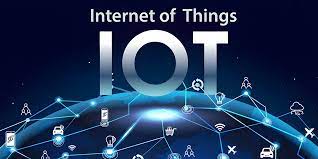LCR (Inductance, Capacitance, and Resistance) meters have long been indispensable tools in the realm of electronic testing and measurement. However, the landscape of LCR meter technology is continually evolving, with manufacturers introducing cutting-edge features and innovations to meet the demands of modern industries. This article explores the recent advancements in LCR meter technology and highlights what’s new in the market.
High-Frequency Measurement Capabilities
One notable advancement in LCR meter technology is the expansion of high-frequency measurement capabilities. As electronic devices and circuits operate at ever-increasing frequencies, LCR meters are now equipped to handle measurements in the gigahertz range. This enhancement allows engineers and researchers to characterize components for applications in wireless communication, radar systems, and high-frequency electronics.
Multi-Parameter Measurement
Traditionally, LCR meters focused on measuring individual parameters such as inductance, capacitance, and resistance. However, recent advancements have seen the integration of multi-parameter measurement capabilities. Modern LCR meters can simultaneously measure multiple parameters, providing a more comprehensive analysis of electronic components. This efficiency is particularly valuable in research and development settings where a thorough understanding of component behavior is essential.
Touchscreen Interfaces and User-Friendly Design
User interfaces of LCR meters have undergone significant improvements with the integration of touchscreen technology and user-friendly design features. These enhancements simplify the measurement process, allowing users to navigate through menu options, customize settings, and view results with greater ease. Intuitive interfaces contribute to improved workflow efficiency, making LCR meters more accessible to users with varying levels of expertise.
Automated Testing and Remote Connectivity
Automation has become a key focus in LCR meter technology, enabling faster and more efficient testing processes. Advanced LCR meters now offer automated testing routines, allowing users to perform measurements quickly and accurately. Additionally, remote connectivity features enable users to control and monitor LCR meters from a distance, facilitating integration into automated test systems and increasing overall productivity.
Enhanced Measurement Accuracy and Precision
Advancements in measurement technologies have led to improved accuracy and precision in LCR meters. Higher resolution displays, refined signal processing algorithms, and advanced calibration techniques contribute to more reliable and repeatable measurements. This increased accuracy is crucial for industries where tight tolerances and precise component specifications are essential.
Compact and Portable Designs
Modern LCR meters are designed with portability in mind. Compact and lightweight designs make them suitable for both laboratory and field applications. Portable LCR meters are equipped with rechargeable batteries, allowing users to conduct measurements on the go. This flexibility is particularly valuable in industries such as telecommunications, aerospace, and automotive, where on-site testing is common.
Integration with Software and Data Analysis Tools
Integration with software and data analysis tools is another notable trend in LCR meter technology. Manufacturers now provide dedicated software platforms that enhance data visualization, analysis, and storage. These tools enable users to generate comprehensive reports, track measurement trends over time, and integrate LCR meter data with other test and measurement systems.
Conclusion
The recent advancements in LCR meter technology reflect the ever-changing landscape of electronic testing and measurement. With capabilities ranging from high-frequency measurements to user-friendly interfaces and automated testing, modern LCR meters are well-equipped to meet the evolving needs of industries relying on precise characterization of electronic components. As technology continues to progress, these innovations contribute to the efficiency, accuracy, and versatility of LCR meters in diverse applications.









